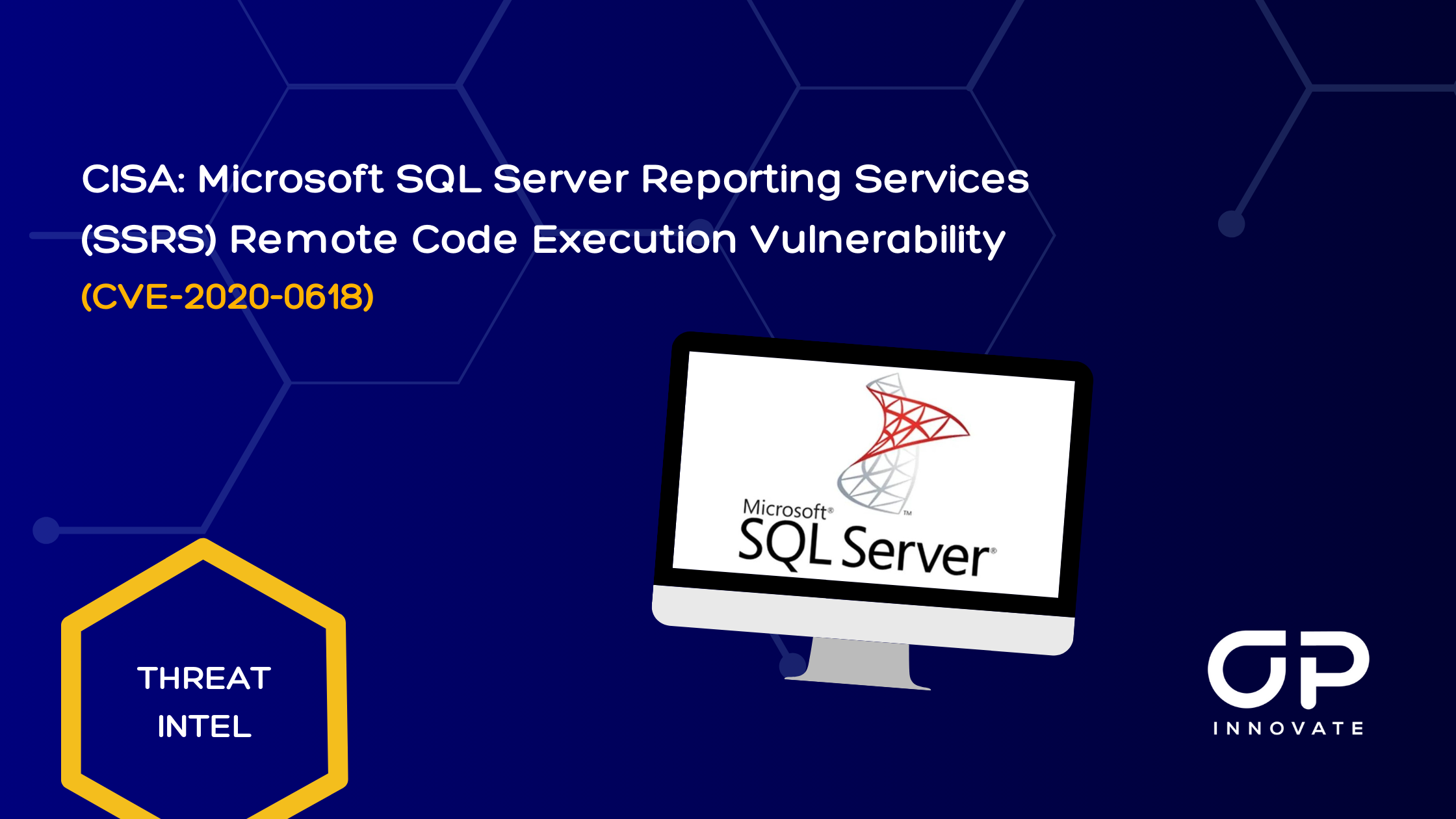CVE-2020-0618 is a Remote Code Execution (RCE) Vulnerability in Microsoft SQL Server Reporting Services (SSRS), caused by improper input validation. This flaw allows attackers to remotely execute arbitrary code on vulnerable systems, potentially giving them full control over the affected server. The vulnerability has been actively exploited in the wild, making it a critical security threat for organizations that rely on SSRS for reporting and data analysis.
Vulnerability Details:
- CVE ID: CVE-2020-0618
- Affected Software: Microsoft SQL Server Reporting Services (SSRS) versions prior to the relevant security patch.
- Type: Remote Code Execution
- Attack Vector: Network
- Severity: Critical (CVSS Score: 9.8)
- Impact: Full system compromise, allowing attackers to run arbitrary code remotely.
Description:
The vulnerability in SSRS arises from improper validation of user-provided input. This flaw can be exploited by sending a specially crafted request to the SSRS server, allowing an attacker to execute arbitrary commands on the target system. Since SSRS is often used to generate and distribute business-critical reports, successful exploitation can result in a complete compromise of the underlying SQL server, data theft, and further network penetration.
Affected Versions:
- All versions of Microsoft SQL Server Reporting Services (SSRS) prior to the application of the security patches released in February 2020.
Exploitation Evidence:
CVE-2020-0618 has been actively exploited by cybercriminals and Advanced Persistent Threat (APT) groups. Attackers have targeted internet-exposed SSRS instances in both public and private sectors, often using this vulnerability as an entry point to deploy ransomware or gain long-term persistence in the network for espionage and data exfiltration.
Impact Assessment:
Exploitation of this vulnerability could lead to severe consequences, including:
- Full Server Compromise: Remote attackers can gain complete control over the SQL server, including the ability to read, modify, or delete databases.
- Data Breaches: Sensitive information stored within databases, such as financial data, personal information, or intellectual property, could be exfiltrated.
- Lateral Movement: Attackers could leverage the compromised server to move laterally within the network, potentially compromising other systems.
- Ransomware Deployment: This vulnerability is often used to deploy ransomware, locking down critical data and systems, resulting in significant financial and operational disruptions.
Mitigation Recommendations:
- Patch Management:
- Apply the February 2020 security update from Microsoft to all SSRS installations. This patch addresses the input validation flaw, preventing attackers from exploiting the vulnerability.
- Limit Exposure:
- Ensure that SSRS is not directly exposed to the internet. Use firewalls or virtual private networks (VPNs) to limit access to trusted users and systems.
- Network Segmentation:
- Isolate SSRS servers from other critical infrastructure to limit the potential damage in case of a compromise.
- Monitoring and Logging:
- Implement logging and monitoring to detect suspicious activity, such as abnormal network traffic or unauthorized access attempts. Use Security Information and Event Management (SIEM) tools to correlate and analyze logs for early signs of exploitation.
- Input Validation:
- Enforce strong input validation on all web applications interfacing with SSRS to further reduce the attack surface for similar vulnerabilities.
Threat Landscape:
Remote Code Execution vulnerabilities like CVE-2020-0618 are particularly dangerous as they allow attackers to gain control of a target system remotely without requiring user interaction. This vulnerability is particularly attractive to ransomware operators, who often exploit RCE vulnerabilities to deploy their payloads. Nation-state actors and cybercriminal groups have also used this flaw to conduct data breaches and persistent infiltration campaigns.
Indicators of Compromise (IoCs):
- Suspicious network activity involving access to SSRS from unexpected IP addresses.
- Unusual spikes in CPU usage or network traffic on SQL servers.
- Presence of unauthorized scripts or executable files within the SSRS environment.
- Unexpected changes to SQL database contents or structure.
Conclusion:
CVE-2020-0618 is a critical vulnerability in Microsoft SQL Server Reporting Services that allows remote attackers to execute arbitrary code and potentially compromise entire SQL server environments. Organizations should prioritize patching affected systems, isolating SSRS from untrusted networks, and enhancing monitoring for signs of exploitation. Immediate remediation is essential to prevent potential data breaches, ransomware attacks, and system compromise.



